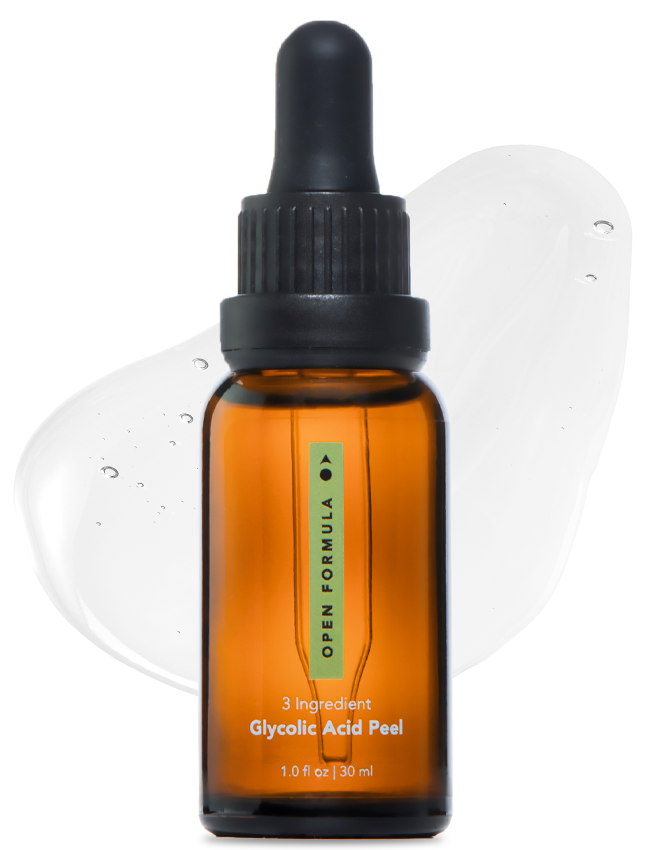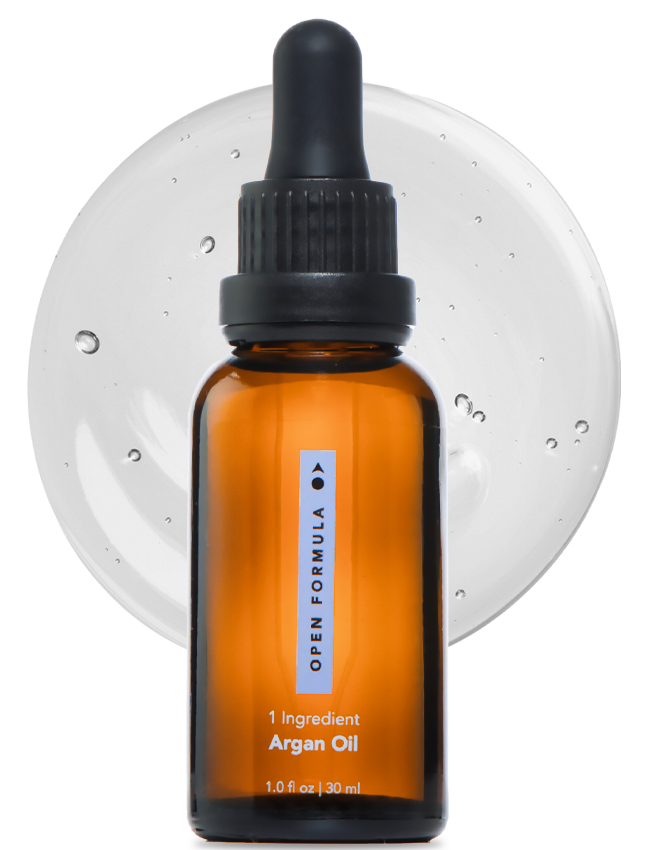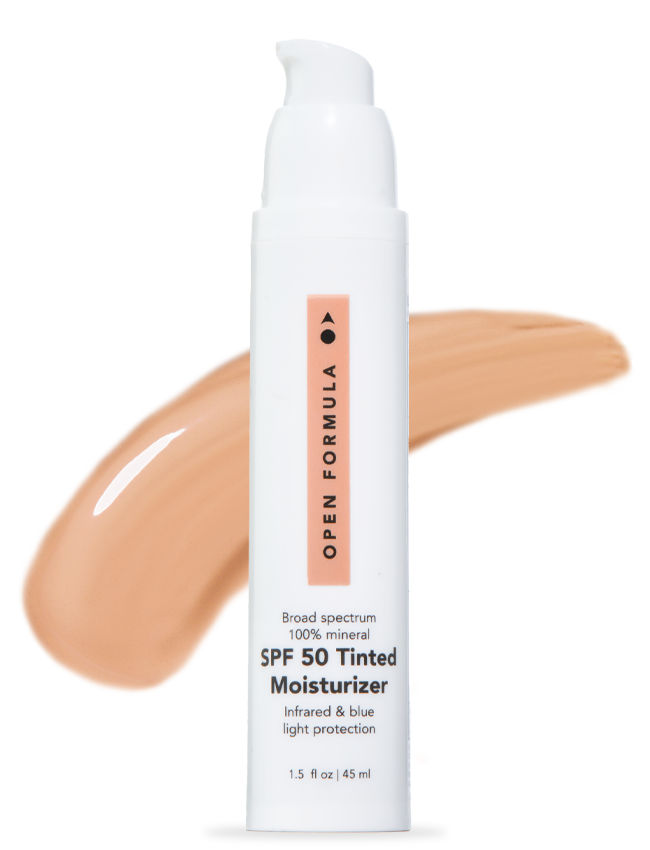Hyaluronic acid is a popular cosmetic injectable used for an instant facelift effect. But what is hyaluronic acid in the first place? Do you need it in your skincare routine? (Short answer: yes.)
What Is Hyaluronic Acid?
The cool thing about hyaluronic acid is that it naturally occurs within our bodies. The average 154 lb person has about 15 grams of it in their body, and half of that is in the skin alone!
It’s an incredibly important molecule that helps our joints work smoothly—and that’s just one of the things that it does. It also makes up an important part of our skin’s natural structure within the collagen matrix. You can imagine the collagen matrix, as the structure in our skin that keeps it looking full and youthful.
Hyaluronic acid within the body helps to plump the matrix up by drawing hydration to it. It's also vital for skin healing and repair—which is what makes it so amazing for skin. All these benefits usually come from the HA present inside our bodies, but it's just as effective as a skincare ingredient!
The Benefits of Hyaluronic Acid
#1 - Glowing Skin
Skin that’s hydrated and moisturized properly literally reflects radiance—and studies prove it! Hyaluronic acid deeply hydrates from within for seriously glowy, radiant skin.
#2 - Skin Bounces Back Faster
In our bodies, it is essential for skin regeneration. This means it can help speed up the healing process, even when applied to the skin! This fast-forwarded skin renewing process could help soothe skin from any irritation (especially from skin dehydration) faster than it would on its own.
#3 - Reduces the Appearance of Wrinkles
Well-hydrated skin is plump and full of moisture, reducing the look of any fine lines and wrinkles. In effect, this acid has the ability to make skin look visibly younger and firmer.
#4 - Lightweight and Fast-absorbing
Because hyaluronic acid is a water-based ingredient, it absorbs quickly into the skin without leaving behind any greasy residue. It layers easily with other products, making it a breeze to add to any skincare routine.
What’s the Difference Between Hyaluronic Acid and Sodium Hyaluronate?
The tricky thing with hyaluronic acid is that it goes by a couple of different names. You might see it in products as sodium hyaluronate or hyaluronan. Technically, the difference is that sodium hyaluronate is the salt form of hyaluronic acid. It has a smaller molecule size, but they both basically act the same when it comes to skin.
What’s interesting about hyaluronic acid is that the smaller the molecule size is, the deeper it can go in the skin. Nano-hyaluronic acid is a thing, too. But regardless of molecule size, all hyaluronic acids are incredibly effective at drawing water into the skin.
And despite being called hyaluronic acid, it isn't actually an acid in the traditional sense. Unlike other ingredients with 'acid' in the name, it doesn't exfoliate your skin—instead, it hydrates your skin like crazy.
It's a “humectant”. That means it attracts water into the skin. It grabs hydration from both the environment and the deeper layers of the skin. Many ingredients do this, but what makes HA so unique is that it can absorb up to 1,000 times its own weight in water—the most of any humectant ingredient!
How to Use
Usually, hyaluronic acid comes in a liquidy, serum-like formula. This is the best way to add it to your routine. It ensures that your skin gets the most out of it, versus the small amount of it present in a cream formula. In liquid form, hyaluronic acid is fast-absorbing and super-efficient—like all good skincare should be!
One of the ways you can get the most out of your hyaluronic acid is by applying it on a slightly damp face. Not dripping wet (because that’s a little messy) but just on skin that’s not all-the-way dry yet.
Why?
Well, what makes this acid so freaking amazing is its ability to carry hydration into the upper layer of skin. When you apply it on damp skin, you’re maximizing what hyaluronic acid can do by giving it a ready supply of hydration! You’re basically supercharging what this ingredient does naturally and making it extra effective—hello, hydrated glowing skin!
One Caveat When Using
However, there’s one thing you should know about how to use hyaluronic acid. If you’re in a dry climate, it can actually cause dehydration. I know, it sounds nuts but it’s a real thing. Remember how we said that hyaluronan grabs hydration from the deeper levels of skin? In ideal conditions, these hydration molecules get ‘stopped’ at the outer level of the skin. In a low-humidity climate, this gets sucked right out of the skin, drying it out—literally the opposite of what we’re trying to achieve.
While this may sound like an Achilles' heel of an otherwise amazing ingredient, it's actually easily preventable. All you need to do is lock the hyaluronic acid into the skin with something that's a little heavier in texture, like a moisturizer or facial oil. These slightly heavier formulas usually contain emollients and occlusives, categories of ingredients that prevent hydration from evaporating away.
Hyaluronic acid is an ingredient that complements all skin routines perfectly!
It’s non-irritating, non-comedogenic, and a stellar source of oil-free hydration for skin. Use it and your skin will thank you! You can find our hyaluronic acid moisturizer here, with added skin-nourishing seaweed extracts for glowing skin.

































